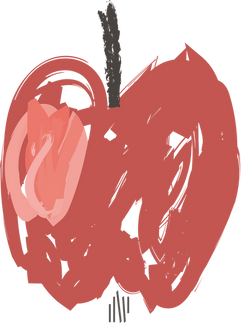What the F**k is happening to me???
- mcuttica55
- May 13, 2021
- 8 min read
Updated: Oct 14, 2022
Welcome to the Menopause....

Most of us have heard the term 'menopause'. It is frequently used to explain away the myriad of symptoms and relationship disturbances that crop up as we near middle age and it therefore comes as no surprise that the topic is of huge comedic value for many stand-up comedians, both men and women alike.
But what exactly is it?
The menopause marks the end of your periods and fertility and is a natural part of aging which typically occurs in the female body between the ages of 45 and 55.
However symptoms can begin as early as 10 years before that point, in the phase known as the perimenopause. The main culprits here are the disappearing hormones oestrogen and progesterone.
Hormones, of which there are many, are chemical messengers that regulate all bodily functions, including digestion, energy production, body repair, brain function, growth and immunity, as well as these two that primarily govern the female reproductive system.
Together, all these hormones work in perfect harmony to keep us functioning at our best.
But before we talk more about the menopause, let’s first understand what oestrogen and progesterone do in a female body during its fertile years.

Follicle Stimulating Hormone (FSH)
Produced by the pituitary gland, FSH stimulates the ovaries to release oestrogen and initiates the process for an egg to mature in the ovary.
Oestrogen (Estrogen U.S.)
Produced by the ovaries, oestrogen stops production of FSH (so only one egg matures per cycle). From day 1 to 14, oestrogen thickens and prepares the lining of the uterus in readiness for a fertilised egg. It also stimulates the pituitary gland to release Luteinising hormone.
Luteinising Hormone (LH)
Produced by pituitary gland, LH triggers the release of the mature egg from the ovary.
Progesterone
Produced by the ovaries, progesterone maintains the lining of the uterus from day 14 to 28 pending the arrival of a fertilised egg.
If the egg is not fertilised, progesterone levels fall, and the uterine lining breaks down and is expelled in menstruation (a period) before the cycle begins again.
If the egg is fertilised, it imbeds itself in the thickened uterine wall and begins to grow.
By week 12, the newly established placenta takes over production of progesterone for the remainder of the pregnancy.

A baby girl is born with approx. 1-2 million eggs. However at puberty - when periods begin - girls typically have 300,000 - 400,000 eggs left, of which only one is matured and released every month (hopefully) as part of the menstrual cycle described above.
Approx. 35 eggs die off per day and as the egg supply becomes scarcer, the menstrual cycle begins to fluctuate, and the perimenopause stage begins.
Although this typically happens to women in their 40s, for some it can happen much earlier.
So what symptoms are typically experienced?

Anxiety
Depression
Hot flushes
Emotional swings
Tiredness / fatigue
Loss of libido
Weight gain
Night sweats
Aching joints
Irritability
Digestive problems
Pelvic floor weakness
Reduced motivation / low energy
Insomnia
There are reportedly more than 40 symptoms and every woman will have her own experience of them.
The important thing here is to notice HOW it is affecting you.
It’s not unusual for many women in their 40s to struggle with tiredness, low mood, a diminishing libido and have trouble sleeping, and attribute it all to their modern busy lives. However, it may be more to do with the huge transformation that is going on deep inside.
As we have seen already, oestrogen and progesterone help control ovulation, but that is not all they do.
In addition to their reproductive roles, their diminishing presence has a knock-on effect on the hormone balance in the rest of the body which has the potential for instigating symptoms far beyond the boundaries of our reproductive system.
Progesterone, alone, provides a calming effect on the central nervous system so as levels fluctuate and decline, it can leave some women susceptible to feelings of anxiety, depression and/or panic attacks. This is especially true for anyone who has suffered with pre-menstrual syndrome (PMS) or post-natal depression (PND) earlier in their lives.
In addition to the symptoms listed above, a fluctuating hormone balance can also cause the commonly reported and frustrating brain fog in which memory is affected and the brain feels like cotton wool.
A woman may feel she was beautifully managing her work life balance one minute only to struggle and be overwhelmed by it, the next. Our lives may begin to feel like a rollercoaster ride that has no stop button.
But the body is not entirely helpless.

As production of oestrogen and progesterone begin to decline in the ovaries, the adrenal glands (two tiny little glands that sit on top of our kidneys) attempt to redress the balance by producing small amounts of these hormones to compensate.
And assuming our lives were good, calm and balanced, that would be enough to help…
However, there is another hormone that is instrumental to our experience of the menopause and that is cortisol. Almost every cell in the body contains a receptor for cortisol, so it has a body-wide potential for action.
Cortisol is also produced by the adrenal glands, and together with adrenaline they are responsible for the freeze, fight or flight response we have in times of stress. They provide you with the energy and focus to deal with the issue at hand.
However, the adrenal glands will always prioritise survival over fertility so if the body is stressed, the production of cortisol will always take priority over the production of oestrogen and progesterone and so the hormone balance is detrimentally affected even further.
Too much cortisol in the body can cause symptoms such as:

Low energy, even if getting adequate sleep
Frequent colds
Cravings for unhealthy foods
Digestion problems like bloating
Weight gain, especially around the middle
Low sex drive
More aches and pains
Low mood
As you can see, these are similar enough to those of the perimenopause to make the cause difficult to pinpoint.
Is stress the main culprit or is it our fluctuating reproductive hormones?
Without doubt, stress will make your journey through these years much tougher than it needs to be and it is important for you to understand exactly what is going on before you can decide on your own best course of action.

Keeping a journal can help you to identify what is going on in your life as symptoms arise. What symptoms are you experiencing? What makes them better or worse? Are your periods regular?
With a clearer idea of your experience and the issues that you need help with, you are in a much better position to decide which treatment approach is the best one for you.
So, what treatment choices are there?
Again, this is as personal as the affects you are experiencing and there is no one size fits all answer. However, here are some of the main choices of treatment that you can choose from.
Hormone Replacement Therapy (HRT)
There are two types of HRT (both of which are available on the NHS):
Synthetic HRT has been used effectively for years and is administered via pills, a patch, cream, gels, pessaries or ring. However, it does come with a small but well-documented increased risk of breast cancer.
Bio identicals (BHRT) are derived from plants and are thought to be molecularly the same as our own hormones. Potential risks are considered less than for conventional HRT but they are relatively new and are currently less well researched. They are given as pills, patches, creams, gels and injections.
Both types of HRT begin with a blood test to assess your current hormone levels before agreeing the best mix of treatment for you. Some women might need oestrogen or progesterone, and some might need a mixture of both.
However, if HRT is not for you, there are other ways to help yourself.
Lifestyle

Naturopaths and medical herbalists offer a holistic, safe and drug-free approach which incorporates tailor-made dietary and lifestyle advice, including these, more widely known, suggestions:
Sage for hot flushes
Black cohosh for hormone balance
Shatavari to improve libido
Adaptagens such as Rhodialo, Ashwagandha or Siberian Ginseng to alleviate the effects of stress and boost resilience
Milk Thistle and Dandelion Root to support the liver
And in much the same way, a good homeopath can help enormously too.
Cognitive Behavioural Treatment (CBT)
CBT is a talking therapy that focuses on how your thoughts, beliefs and attitudes affect your feelings and behaviours. This can be extremely effective for the management of psychological symptoms, such as low mood or anxiety.
Stress Management
Now we have a better understanding of what is going on, we can see that stress has a significant effect on our experience, so it makes sense that anything we do to reduce our stress will help.
Here are some ideas:
YOGA - This is a good place to start. As well as providing a slow, but steady physical body-wide workout, the practice gives you the opportunity to start noticing how you truly feel physically, mentally, and emotionally; and with this increased level of self-awareness, you can more confidently decide which treatment / lifestyle changes might suit you best.
EXERCISE - Do what you love but try to keep it balanced. If you are sitting at a desk all day, try doing something that moves your body in a completely different way. Walk, run, swim, yoga, pilates, whatever suits you best and ideally some exercise every day is better than intensive workouts three times a week.
CONNECT - Sharing your experience with family and friends can be instrumental. Simply having their support and understanding can help, and in turn, this may encourage them to share too. However, if you feel you are really struggling please reach out to a health professional or counsellor; they are there to help you.
EAT WELL – It sounds so obvious, but a healthy balanced diet really does help the body function at its best. A chocolate bar might help lift us in the short term but the sugar high inevitable leads to a low and this will simply give us an even more bumpy ride along with a blossoming waistline.
AVOID CAFFEINE – Caffeine elevates our levels of cortisol which can have a significant effect on menopausal symptoms and sleep. Reducing your intake of caffeine can really help.
MINIMISE ALCOHOL – Like chocolate, alcohol does offer a short-term solution, but it also interferes with sleep quality, which is particularly important at this time, and can add to that already blossoming waistline mentioned above.
BREATHE – Take some time to sit quietly every day. It does not have to be for long but having a few moments to yourself every day is important. Sit and notice your breath for a few moments then try to bring some balance to it. The ideal breath for health is an inhale to a count of 5 or 6 and an exhale that is the same.
And most importantly ENJOY yourself!
Relax, have fun. Spend time with people you love and at places that excite and nurture you.
A time for reflection and personal growth
The perimenopause/ menopause often coincides with other monumental life changes. Children leaving home, parents becoming more dependent and close relationships exposed in all their glory without the distractions of family life to help obscure them.
But all is not lost!
The menopause can be a hugely magical and transformative time too. As our hormones change, there is also a decline in our levels of oxytocin which is associated with nurturing, bonding and protectiveness, and this can help us view life from a new, more carefree perspective.

For the first time in years, you may be free to put your own needs first.
Are you happy in your job? Is there a trip you would love to take? Is there a hobby you are keen to explore? Are you happy in your relationship? Is it time to move? Who are you?
The list is endless. Saying goodbye to our childbearing years might be extremely difficult and painful for all sorts of reasons, but it also heralds a significantly new beginning too and how that manifests is totally up to you.
Remember this is YOUR time. Armed with a much deeper sense of who you are and what is important to you, the world and your future role in it, is totally up to you.
It might feel like the end, but remember every ending marks a new beginning, so give yourself the space you need to fully become the woman you were always meant to be.


















Comments